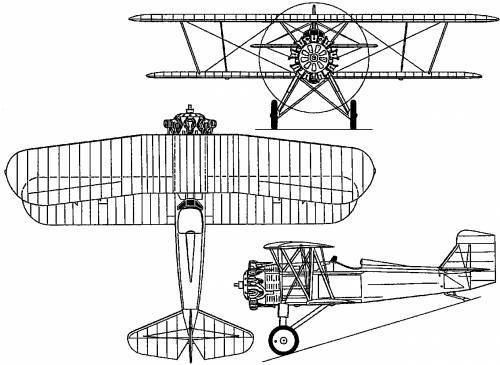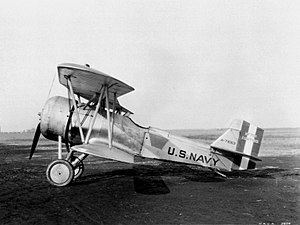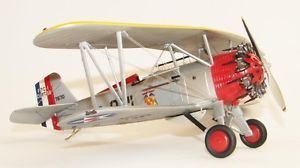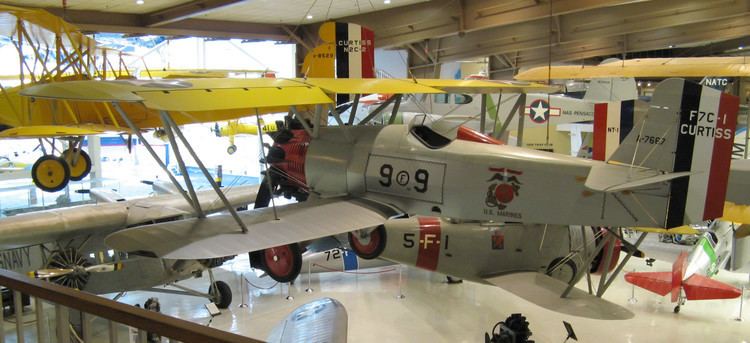Top speed 249 km/h Length 6.89 m First flight February 28, 1927 | Wingspan 9.34 m Retired 1933 | |
 | ||
Manufacturer | ||
The Curtiss F7C Seahawk was a carrier-capable biplane fighter aircraft of the United States Navy Marine Corps in the late 1920s and early 1930s.
Contents

Design and development

Curtiss' Model 43 was their first aircraft designed expressly for the Navy, rather than a modified Army type. While clearly a descendant of the P-1 Hawk, its wings were constant-chord rather than tapered, and the upper wing had a slight sweepback. The engine was a 450 hp (340 kW) Pratt & Whitney R-1340-B Wasp radial. Entirely fabric-covered, the top wing was framed with spruce, while the fuselage was built from a combination of aluminum and steel tubing, sufficiently strong to serve as a dive bomber as well as a fighter.
Operational history

The prototype XF7C-1 first flew on 28 February 1927. After some modification demanded by the Navy (such as the wing sweepback), 17 production aircraft F7C-1 Seahawks were built, and entered service in the USMC's VF-5M at Quantico. In 1930 VF-9M organized the Marines' first aerobatic stunt team, "The Red Devils", with F7Cs featuring red painted noses. They continued in service until 1933.
Variants

Operators
Specifications (F7C-1)
General characteristics

Performance
Armament
